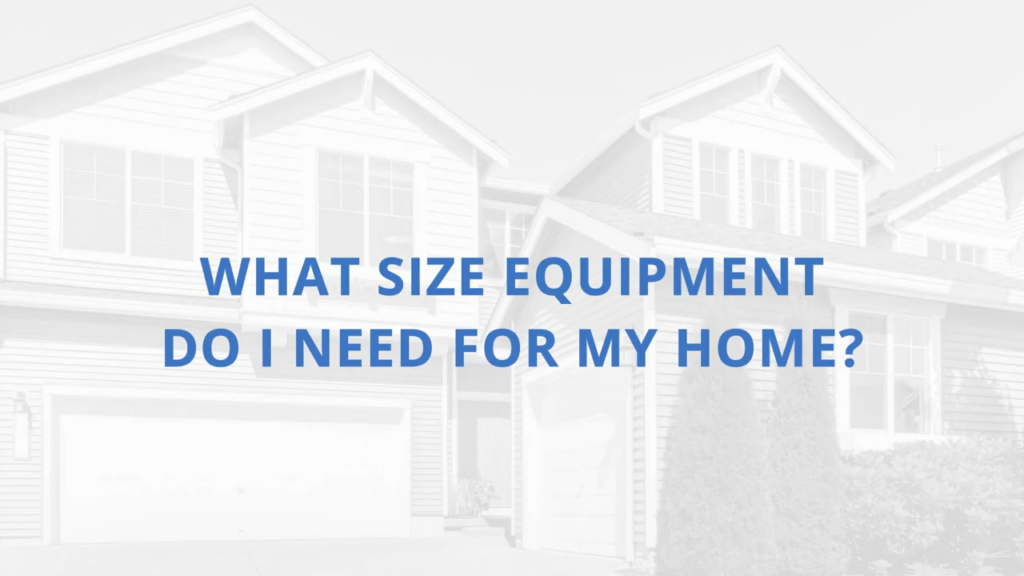A: To determine what size Austin HVAC system required for your home, we need to do a Manual J or Load calculation. That’s where we take all the information from your home. Information such as the amount and R-value of the insulation in the walls and attic, as well as the exterior structure. We input that information along with other measurements into a software that calculates the HVAC needs of your home.
Austin HVAC: Size AND Speed Matter
Usually, when we post informational articles on new Austin HVAC tech and tips, we get a lot of messages with questions. Questions range anywhere from the one in the video to questions about coolant, and the ubiquitous “what’s that smell from my ducts!?” We do try our best to answer every customer promptly. In doing so, we’ve noticed quite a few recurring questions dealing with buying a new HVAC system.
Well, being one of the top installers in the Austin HVAC industry, we decided to share some of these questions with everyone. With this many people asking the same questions, maybe you are reading this and finding the answer you’ve been Googling for. Be on the lookout in future posts for more questions from customers like yourself!
Making Sense Of The Different Austin HVAC Technology
If you’ve ever shopped around for a new AC unit lately, you’ve probably been bewildered by all the industry lingo. One of our repeat customers who owns several rental properties in Austin and San Antonio messaged us with this great question.
“I’ve been calling around to different Austin HVAC companies and nobody seems to beat your value. However, what I am having trouble with is all of you mention different systems and it has me confused. What does Variable-Speed, Single-Stage, and Two-Stage AC mean in terms of the HVAC unit? None of the companies seem to speak in laymen’s terms. Can you break it down for me, please? I need a replacement for a two-story rental that has a 20-yr old unit— James, Dripping Springs TX
James asks a great question and honestly, a lot of Austin HVAC companies tend to speak in industry jargon. That is one of the things we train our technicians here at Oasis to steer away from. We want to be able to inform our customers in plain English.
Most customers like James have heard some HVAC terms enough times to understand what they mean. Terms like MERV rating, SEER, and Energy Star which all deal with system efficiency. Once you’ve determined the right size system for your home you’ll come across another factor—speed. When we say speed, we are talking at what speed the compressor runs. So, to avoid confusion when you see the word “stage,” think “speed.” It will make it a lot less confusing!
So, how is one different from the other and which is the best choice for your home? Well, we will explain it all in plain English, give you the pros and cons of each. We’ll also recommend our top pick for performance.
Single-Stage Austin HVAC Units
Single-stage systems are the budget model among all available AC units in the Austin HVAC industry. You may even have one in your home if it’s the original unit and is 15 years or older. When home builders build out a subdivision, they use the most basic, inexpensive components unless you upgrade. That means cheap, single-pane windows, the least expensive AC unit, and the minimum required insulation. This kind of AC unit is called single-stage because it only runs at one speed—full blast for as long as it’s on.
Pros & Cons:
REASONS TO BUY
Cost
This is really the only pro and even then, it comes with a huge “buyer beware.” It’s a low-cost option upfront, but in the long run— it will cost you more and we’ll tell you why.
REASONS TO PASS
Minimal Efficiency
Even though Austin HVAC companies sell single-stage units all the time, they barely meet minimum efficiency standards. What does this mean to you as a homeowner? It means that while the unit is cheap, operating it is not. This is because the system runs at full blast anytime it needs to be on. So, in the cooler months when you really don’t need the AC at full blast to cool—you have no choice. It goes full throttle and the dial on your meter does too. If you can afford to finance a better unit you’ll save yourself much more down the road.
Short Cycling
When an AC unit only has one speed, it runs off and on in noticeably short sporadic bursts of power. Much like turning on a blender with it set on high. Not only does this use a lot of power, but it leads to a lot more breakdowns. Single-stage units see the shortest average lifespan of all Austin HVAC models on the market.
Inconsistent Temperatures
Since a single-stage air conditioner cools at only one speed it ends up cycling often, with short blasts of cold air. This leads to very inconsistent temperatures throughout the home. It could be ice cold in one bedroom, while slightly cool in the next room. The problem is compounded if you have a multi-story house. In fact, we will not install a single-stage unit on a multi-story home without you acknowledging our warning against it for liability reasons.
OUR VERDICT
Unless you can’t afford anything else and absolutely can’t wait till you can—avoid a single-stage unit at all costs. Try working with your current system or look at our reasonable financing options for a more advanced system such as the two we’re about to cover.
Two-Stage Air Conditioners
As obvious as the name alludes to, these types of systems run at two speeds: high and low. This means when Austin weather is mild such as spring, the AC will run slower but at a consistent pace. However, when it’s that scorching Texas summer weather, the AC goes and runs at full speed to keep the home cool. When we say “low” that means about 60-70% of the maximum speed, so it does run more efficiently.
REASONS TO BUY
Efficiency
Let’s go back to the blender comparison. When you start the blender on slow and then switch to high, there is less of a mechanical “jolt” when it starts. The two-stage units benefit in the same fashion, so it’s less wear and tear. Also since it can alternate between low and high speed it runs more steadily and efficiently. You will absolutely notice the savings over a single-stage unit.
Consistent Temperatures
Because it produces a slow, steady flow of cool air, your home benefits from even temperatures throughout the home. No more hot spots, no more cold zones!
Longer, Quieter Cycles
When running in low speed mode, a two-stage unit is going to be alot quiter than a single-stage model of the same size.
REASONS TO PASS
Cost
Similar to how single-stage units only have one reason to buy, two-stage units have only one reason to pass. That reason is purely dependent on your budget constraints. These units cost more upfront than single-stage counterparts. However, if you can finance or stay with your current system and save up—two-stage will save you money in the long run. This is due to it’s lower operating cost, higher efficiency, and longer lifespan.
OUR VERDICT
If your budget allows for it, a two-stage unit is an excellent choice for a compromise of budget, power, and efficiency. You will save a lot more in terms of maintenance expenses and energy usage as well.
Variable-Speed Air Conditioning
These units are the crème de la crème of Austin HVAC units. Even though two-stage systems are quite a worthy investment—they can’t hold a candle to variable-speed models. A two-stage unit only has two speeds for cooling. However, a variable speed unit can aggregate it’s speed up and down at a much smoother pace. There is no high or low—it has a full range of adjustments and runs ultra-smooth. This means it can change speeds an infinite number of times during the day as it’s needed.
REASONS TO BUY
Most comfortable option
These systems run like Cadillacs. They can cool your house down to the exact amount it requires to keep your set temperature. When it’s really hot it could go up to full blast to initially cool your home and then adjust speed all day to maintain that temperature.
Most efficient
Since these units can ramp down their output to less than 40% of respective capacity, these units save you a ton of money. You will immediately see a huge change in your electric bill with these highly efficient units.
REASONS TO PASS
Cost
Again, with the advanced technology in these units, the initial cost can be prohibitive if you have a small budget. However, with financing—going with variable-speed will give you the best return on your investment. You can expect these levels of systems to last a very long time while still maintaining efficiency.
OUR VERDICT
You will never have any buyer remorse going with a quality variable speed unit from Oasis. That’s it—if you can make the financials work—buy this unit.
Oasis: The Leader In Austin HVAC
Naturally only you know your budget restrictions and so we can only make our recommendations in a general sense. Let us go over your needs and budget with you and see what we can come up with.
With financing and various rebates and special promotions—there’s no telling what’s possible unless you contact us.





